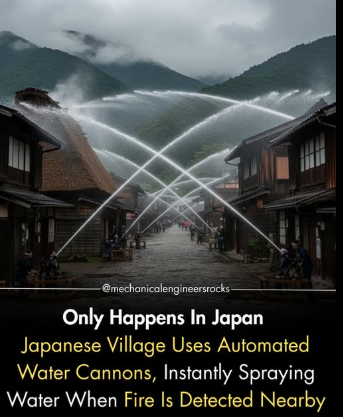Smart Building Technologies
Energy efficiency in buildings is a crucial component of sustainable development, as buildings account for a significant portion of global energy consumption and greenhouse gas emissions.
By implementing energy-efficient practices and technologies in building design, construction, and operation, cities can reduce energy consumption, lower carbon emissions, and create more sustainable and comfortable living and working environments.
Passive design strategies focus on optimizing the building’s orientation, insulation, ventilation, and shading to reduce the need for mechanical heating, cooling, and lighting. By maximizing natural daylighting, utilizing thermal insulation, and employing energy-efficient windows and shading devices, buildings can minimize energy losses and optimize indoor comfort. A well-designed building envelope plays a critical role in reducing heat transfer, ensuring proper ventilation, and maintaining a stable indoor environment.
The use of energy-efficient lighting systems, such as light-emitting diode (LED) bulbs, can significantly reduce energy consumption. LED lighting consumes less electricity, lasts longer, and provides better quality light compared to traditional incandescent bulbs. Energy-efficient appliances, including refrigerators, air conditioners, and water heaters, are also essential in minimizing energy consumption in buildings. Building codes and regulations can mandate the use of energy-efficient lighting and appliances, encouraging their widespread adoption.
High-Efficiency HVAC Systems
Heating, ventilation, and air conditioning (HVAC) systems are a significant source of energy consumption in buildings.
By utilizing high-efficiency HVAC systems, such as variable refrigerant flow (VRF) systems, heat pumps, and energy recovery ventilation, buildings can achieve substantial energy savings. These systems optimize temperature control, minimize energy losses, and reduce the need for mechanical heating and cooling. Proper maintenance and regular system upgrades are also crucial to ensure the optimal performance and energy efficiency of HVAC systems.
Integrating renewable energy sources into buildings, such as solar panels and wind turbines, can significantly reduce reliance on fossil fuel-based energy and lower carbon emissions. Solar photovoltaic (PV) systems can generate clean electricity on-site, powering lighting, appliances, and even feeding surplus energy back into the grid. The advancement of technology has made renewable energy systems more affordable and accessible, allowing buildings to become active contributors to the energy grid.
The adoption of smart building technologies, including building automation systems, energy management systems, and smart meters, can optimize energy use and improve building performance. These technologies enable real-time monitoring and control of energy consumption, allowing building managers to identify energy inefficiencies, adjust settings, and optimize operational performance. Smart systems can also automate lighting and HVAC controls based on occupancy and environmental conditions, further reducing energy waste.
Building Codes and Standards
The implementation and enforcement of energy-efficient building codes and standards are critical for promoting sustainable construction practices.
Building codes can mandate energy performance requirements, insulation standards, lighting efficiency, and renewable energy integration. Governments and local authorities can offer incentives and certifications for buildings that meet or exceed energy efficiency targets, encouraging developers and owners to invest in sustainable building practices.
Education and awareness campaigns play a vital role in promoting energy efficiency in buildings. Providing information and resources to architects, engineers, contractors, and building owners on sustainable design principles, energy-efficient technologies, and best practices can drive the adoption of energy-saving measures. Educational programs can also target building occupants, raising awareness about energy conservation practices, such as turning off lights when not in use, using natural lighting whenever possible, and setting energy-efficient temperature levels.
Energy efficiency in buildings is a crucial aspect of sustainable urban development. By implementing passive design strategies, utilizing energy-efficient lighting and appliances, adopting high-efficiency HVAC systems, integrating renewable energy sources, leveraging smart building technologies, enforcing building codes,
https://www.exaputra.com/2023/06/energy-efficiency-in-buildings-towards.html
Renewable Energy
Deer Hunters and Gun Deaths
A couple of points:
Actually, there are 11.4 million deer hunters, 4.6 million use archery and 6.8 million use guns. It just takes a second to look this up, and doing so prevents one from spreading malicious lies.
Hunters don’t use not assault weapons, which are almost always chosen by mass murderers. No one with any sense objects to rifles being sold to hunters.
Renewable Energy
With Trump, It Gets Worse by the Day
With each passing day, Trump’s rhetoric reveals to an even greater degree his cruelty, his vindictiveness, and most of all, his lack of understanding of the U.S. Constitution. The only thing he has on his side is his capacity to mirror the hate and ignorance of his MAGA base.
We used to be proud of our country.
Renewable Energy
How Japan (Doesn’t) Fight Fires
 I’ve been to Japan. They’re sharp people.
I’ve been to Japan. They’re sharp people.
At the very least, they don’t have people stupid enough to indiscriminately shoot water all over a village because of a kitchen fire.
-
Climate Change3 months ago
Guest post: Why China is still building new coal – and when it might stop
-
Greenhouse Gases3 months ago
Guest post: Why China is still building new coal – and when it might stop
-
Climate Change2 years ago
Spanish-language misinformation on renewable energy spreads online, report shows
-

 Greenhouse Gases1 year ago
Greenhouse Gases1 year ago嘉宾来稿:满足中国增长的用电需求 光伏加储能“比新建煤电更实惠”
-
Climate Change Videos2 years ago
The toxic gas flares fuelling Nigeria’s climate change – BBC News
-

 Climate Change1 year ago
Climate Change1 year ago嘉宾来稿:满足中国增长的用电需求 光伏加储能“比新建煤电更实惠”
-

 Carbon Footprint2 years ago
Carbon Footprint2 years agoUS SEC’s Climate Disclosure Rules Spur Renewed Interest in Carbon Credits
-
Renewable Energy4 months ago
US Grid Strain, Possible Allete Sale








